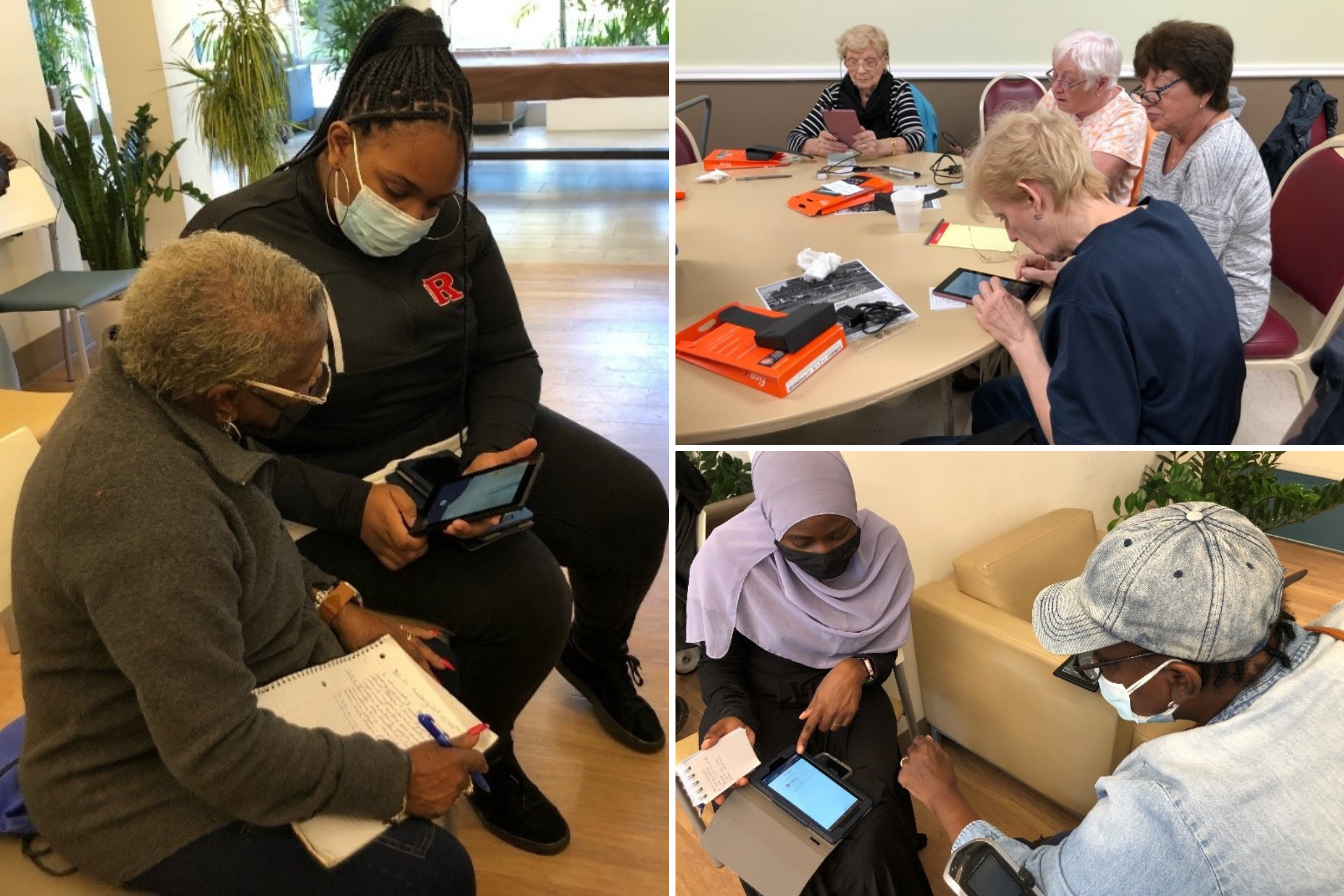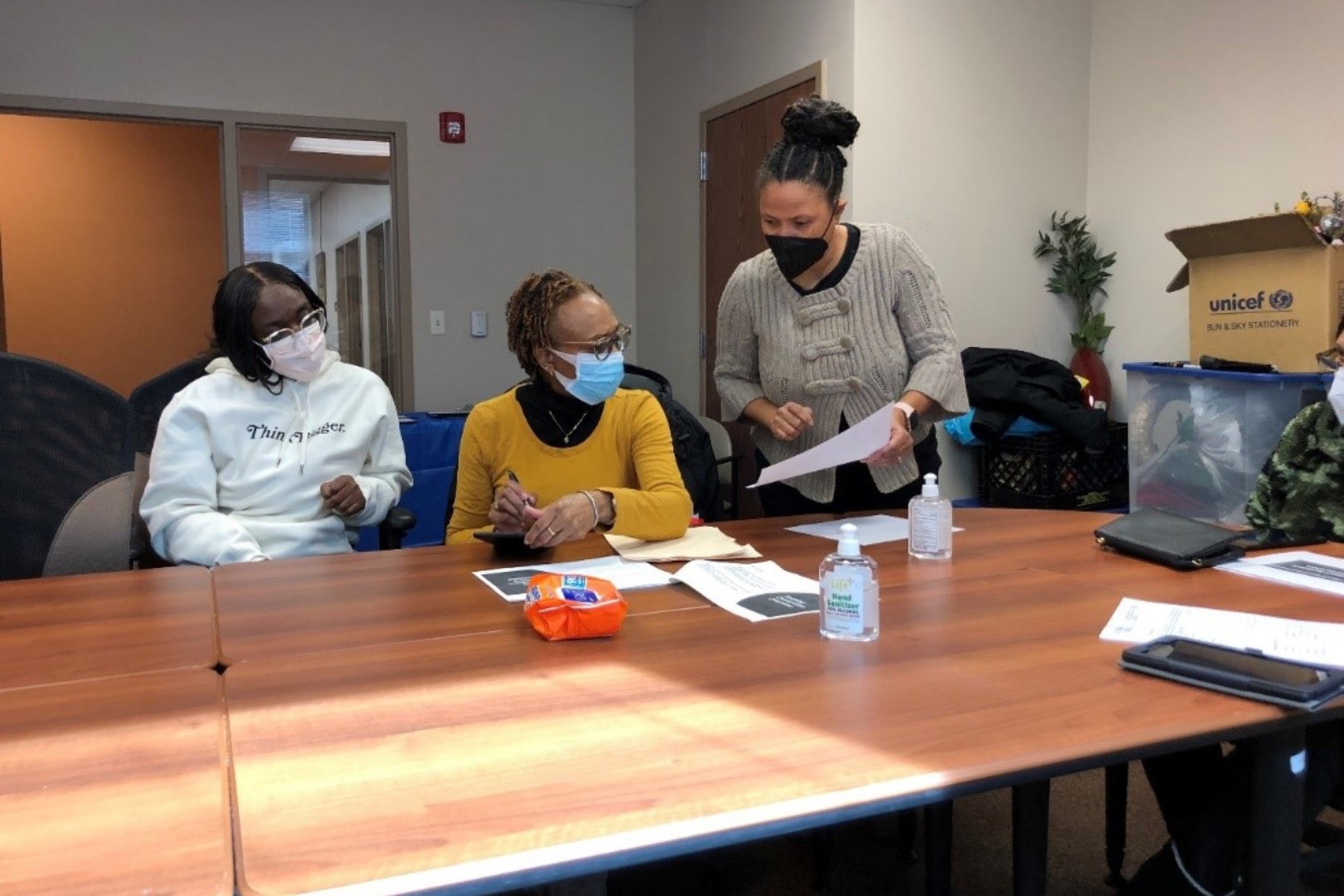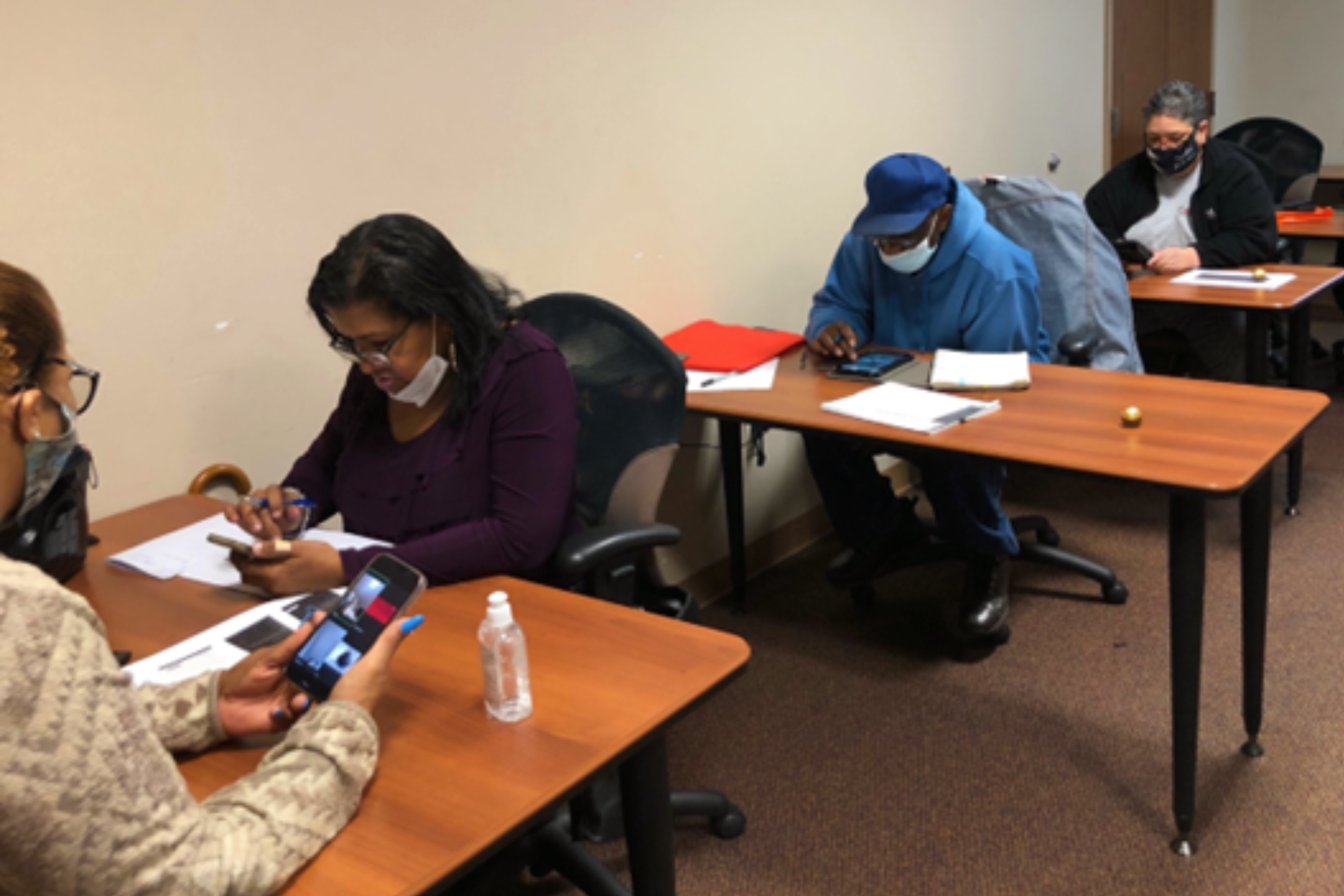By Donita Devance, Dr. Diane Hill, and Epiphany Munz
COVID-19 changed the way we communicate and interact globally while underscoring deep inequities in access to the internet and digital technology, notably among urban-dwelling older adults on fixed low-incomes. The lack of access to user-friendly technological devices and/or broadband services and proficiency in their usage, which is often referred to as “the digital divide,” is a long-recognized problem in communities of color, especially among older adults. This disparity leaves elders functionally impaired and at risk. A 2021 AARP report published in partnership with the Humana Foundation offers this perspective: “Seniors isolated by lack of access to reliable technology face personal hardships including physical and mental health issues that affect the quality and duration of their lives.”
While digitally-based communications have begun to penetrate all aspects of our lives—e.g., accessing medical care; registering for vaccines and other services; validating information; obtaining essentials like groceries and other necessities; worshiping and socializing—many elders have been ill-prepared for the sudden, pervasive social shift. Greater Newark, like many urban communities where profound disparities in health care outcomes were already a concern, was particularly hit hard by COVID-19 illness and death. Already vulnerable low-income elders were suddenly confronted with challenges related to the rapidly changing way in which medical information, healthcare, and related services were delivered.
In response to the COVID-19 pandemic, Rutgers University-Newark Office of University-Community Partnerships (OUCP) and the Advocates for Healthy Living Initiative (AHLI) surveyed older adults about their experiences and needs related to digital communications as part of the Senior Health Connect Digital Divide initiative. Securing funding and support from the New Jersey State Policy Lab and community partners, OUCP and AHLI organized students and peer volunteers to provide one-on-one, group, and individual training designed to help seniors become proficient in using Amazon Fire 7 tablets. OUCP and partners also devised programs to encourage use of the technology, and train-the-trainer sessions for peer leaders to support the initiative.
Improving digital health literacy shows great promise toward ameliorating existing health disparities (Philbin, 2019, Sieck, 2021), but this success depends on increasing the capacity of seniors to harness the skills needed to use these platforms safely and effectively. At this critical juncture, we must adapt digital health literacy programs to the learning methods and techniques most suitable for older adults. A 2020 Frontiers in Psychiatry article explains, “The task of closing the digital divide therefore becomes an issue of not only improving elderly access to technology, and offering skills training so they can develop digital skills, but also implementing programs to increase the elderly population’s motivation to use technology, and better understand the benefits it can offer.”
The state of New Jersey has innovated its information sharing to assist communities to access vital health information and services. A COVID-19 Information Hub, vaccine registries, and digital immunization records are among the ways the state supported sharing critical information and resources. Closing the digital divide for some of the state’s most vulnerable citizens so that they can access and utilize these resources is both a practical and moral imperative.
References:
Jaarsveld Van, G. M. (November 12, 2020). The Effects of COVID-19 Among the Elderly Population: A Case for Closing the Digital Divide. Frontiers in Psychiatry. Vol.11, doi:10.3389/fpsyt.2020.577427. https://www.frontiersin.org/articles/10.3389/fpsyt.2020.577427/full
Older Adults Technology Services (OATS). (2020). Aging Connected: Exposing the Hidden Connectivity Crisis for Older Adults. https://agingconnected.org/wp-content/uploads/2021/05/Aging-Connected_Exposing-the-Hidden-Connectivity-Crisis-for-Older-Adults.pdf
Philbin MM, Parish C, Pereyra M, Feaster DJ, Cohen M, Wingood G, Konkle-Parker D, Adedimeji A, Wilson TE, Cohen J, Goparaju L, Adimora AA, Golub ET, Metsch LR. Health Disparities and the Digital Divide: The Relationship between Communication Inequalities and Quality of Life among Women in a Nationwide Prospective Cohort Study in the United States. J Health Commun. 2019;24(4):405-412. doi: 10.1080/10810730.2019.1630524. Epub 2019 Jun 14. PMID: 31198091; PMCID: PMC6620144.
Rutgers University-Newark Office of University-Community Partnerships. (2022). Seasons of Change: Navigating the New Normal. Annual Report. https://oucp.newark.rutgers.edu/wp-content/uploads/OUCP-annual-RPT2021.pdf
Sieck CJ, Sheon A, Ancker JS, Castek J, Callahan B, Siefer A. Digital inclusion as a social determinant of health. NPJ Digit Med. 2021 Mar 17;4(1):52. doi: 10.1038/s41746-021-00413-8. PMID: 33731887; PMCID: PMC7969595.



